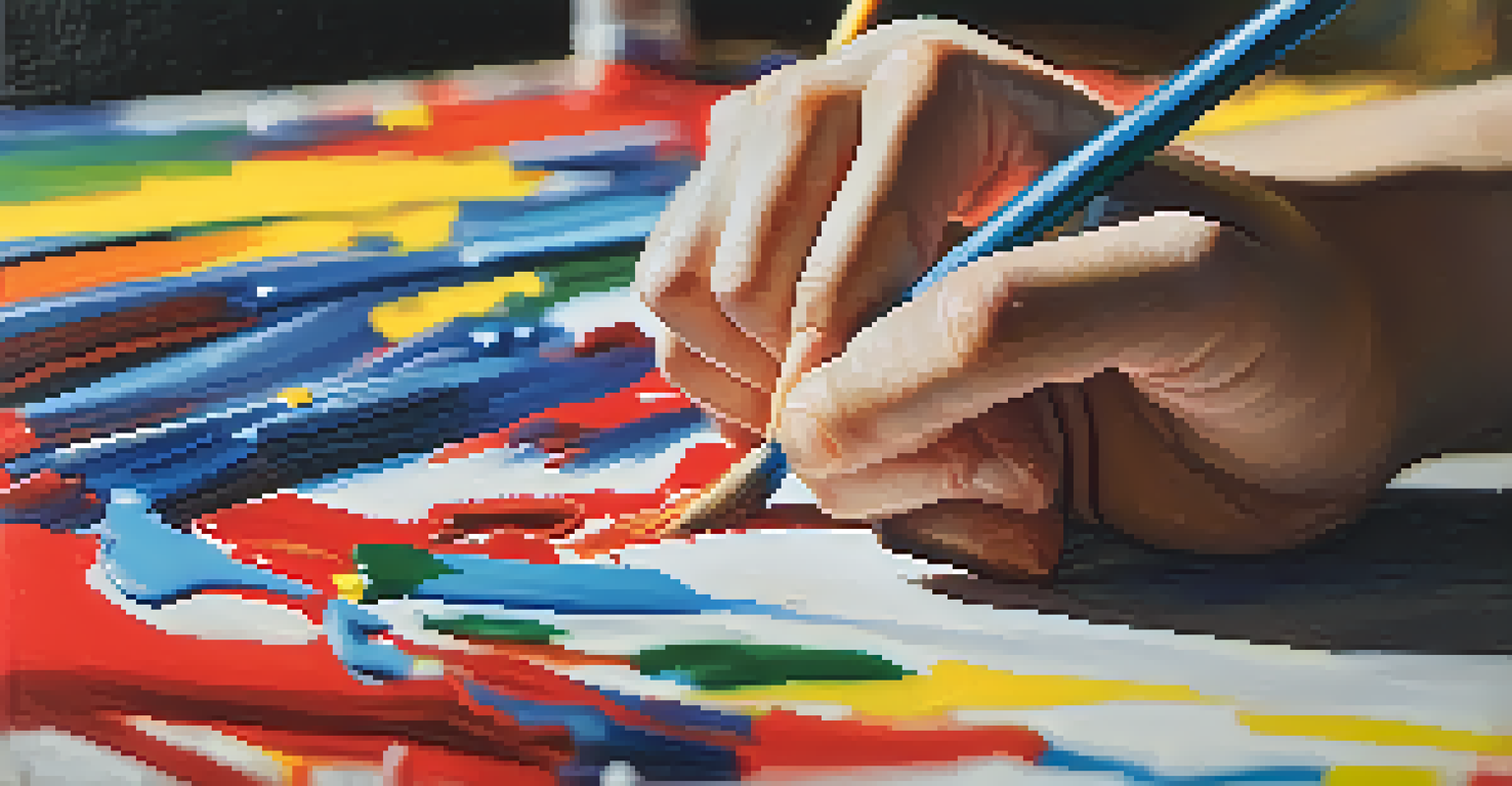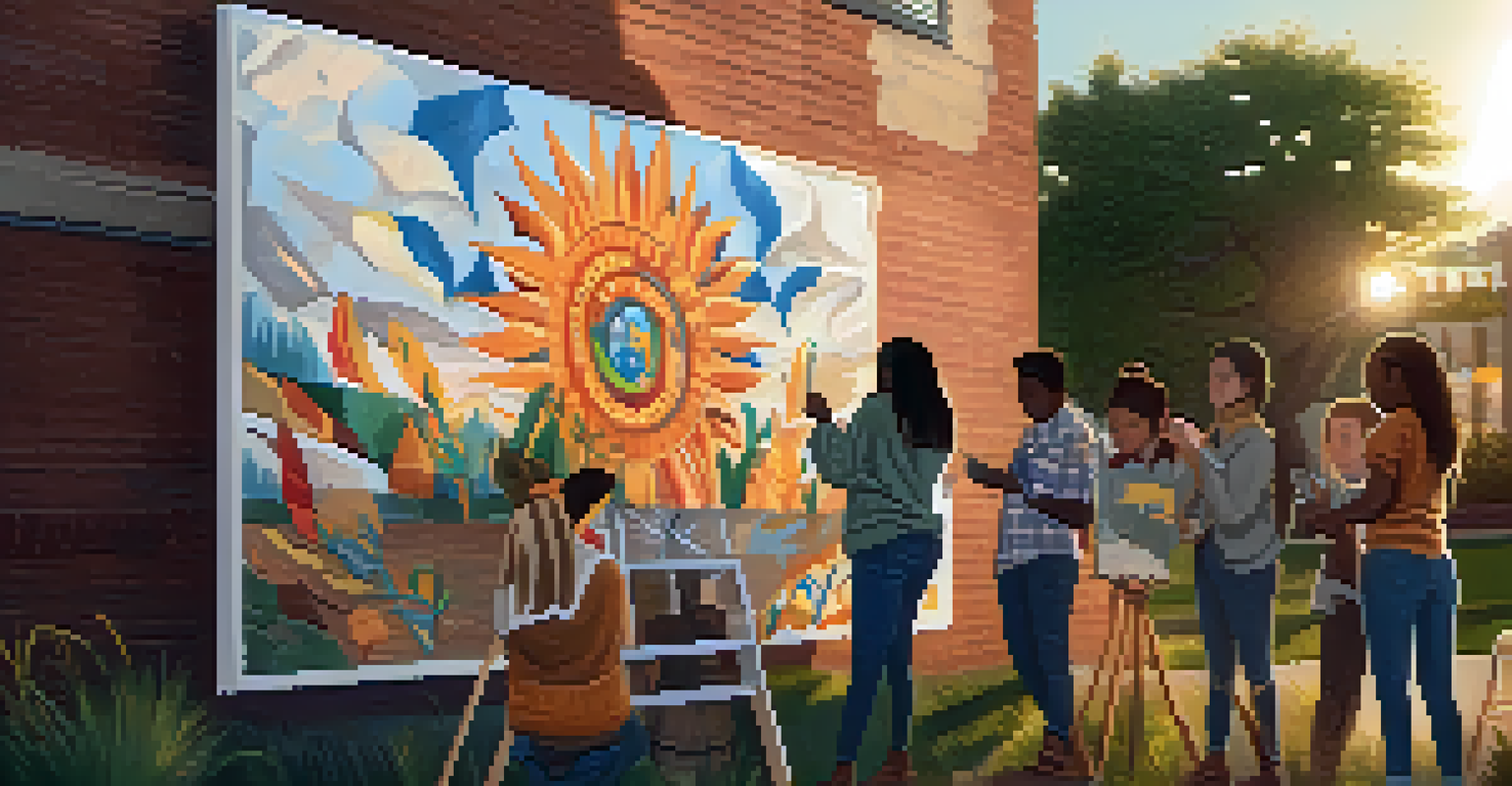Art Education: A Catalyst for Innovation and Problem Solving

Understanding the Role of Art in Education
Art education goes beyond teaching students how to paint or draw; it fosters creativity and critical thinking. By engaging with various art forms, students learn to express themselves and interpret the world around them. This self-expression is crucial, as it encourages them to think outside the box, a skill essential in today's fast-paced environment.
Art is not freedom from discipline, but disciplined freedom.
Moreover, art serves as a powerful medium for communication. When students create art, they learn to convey complex ideas and emotions visually, which can be more impactful than words alone. This ability to communicate effectively is a valuable asset in any field, reinforcing the importance of art in shaping well-rounded individuals.
In essence, art education lays the groundwork for a holistic learning experience. By integrating creativity with academic subjects, it cultivates a mindset that values innovation, preparing students for challenges beyond the classroom.
Creativity as a Problem-Solving Tool
Creativity is often viewed as an innate talent, but it can be developed and honed through art education. When students engage in creative projects, they learn to approach problems from multiple angles. This flexibility in thinking is crucial when faced with obstacles, allowing students to devise unique solutions that others might overlook.

For example, consider a group project where students must design a sustainable product. Through brainstorming and artistic expression, they can explore unconventional materials and designs that might not be considered in a traditional classroom setting. This process not only enhances their problem-solving skills but also fosters collaboration and teamwork.
Art Fuels Creativity and Innovation
Art education enhances students' creativity, enabling them to approach problems from multiple perspectives.
Ultimately, the creative problem-solving skills gained from art education are transferable to various disciplines. Whether in science, technology, or business, the ability to think creatively can lead to innovative breakthroughs and solutions.
Enhancing Emotional Intelligence Through Art
Art education also plays a significant role in developing emotional intelligence, which is crucial for effective problem solving. By engaging in artistic expression, students explore their emotions and learn to empathize with others. This emotional awareness enables them to understand different perspectives, a vital skill when addressing complex issues.
Creativity takes courage.
For instance, when students participate in drama or expressive arts, they step into the shoes of different characters. This experience cultivates empathy, teaching them to appreciate diverse viewpoints and experiences. Such skills are invaluable in collaborative environments where teamwork and understanding are essential.
In summary, emotional intelligence refined through art education enhances students' ability to navigate interpersonal challenges. This understanding not only aids in personal growth but also equips them to tackle real-world problems with compassion and insight.
Art Education and Cultural Awareness
In an increasingly globalized world, cultural awareness is more important than ever. Art education exposes students to various cultures and traditions through the study of different artistic practices. This exposure broadens their understanding of the world, encouraging them to appreciate diversity and think critically about cultural narratives.
By exploring art from different cultures, students learn to recognize and respect the values and beliefs that shape various societies. This understanding can lead to more innovative thinking, as they can draw inspiration from a wide range of sources. Such cultural fluency enhances their ability to create solutions that are sensitive to diverse populations.
Emotional Intelligence Through Art
Engaging in artistic expression helps students develop empathy and emotional awareness, essential for collaboration.
In essence, art education fosters cultural awareness that is essential for effective problem solving in a diverse world. By embracing global perspectives, students become more adaptable and innovative thinkers.
The Intersection of Art and Technology
As technology continues to evolve, the intersection of art and technology presents new opportunities for innovation. Art education often incorporates digital tools and platforms, allowing students to experiment with new mediums. This integration not only enhances their artistic skills but also prepares them for careers in an increasingly digital landscape.
For example, students might create digital illustrations or engage in multimedia projects that combine traditional art with technology. This hands-on experience equips them with valuable technical skills while encouraging them to think creatively about how to use these tools effectively. It’s a powerful combination that opens doors to new possibilities.
Ultimately, the fusion of art and technology in education fosters a mindset geared toward innovation. Students learn to embrace change and adapt to new tools, critical for problem solving in today’s tech-driven world.
Case Studies: Successful Art Programs in Schools
Several schools have implemented art programs that have shown remarkable success in fostering innovation and problem solving. For instance, a high school in California integrated art into its science curriculum, allowing students to create visual representations of complex scientific concepts. This approach not only improved understanding but also sparked a newfound interest in both subjects.
Another notable program involved a local middle school that partnered with community artists to facilitate workshops. These workshops encouraged students to explore their creativity while addressing real community issues, such as environmental sustainability. By connecting art to real-world problems, students developed a sense of agency and a commitment to finding solutions.
Cultural Awareness via Art Education
Art education exposes students to diverse cultures, fostering critical thinking and respect for different perspectives.
These case studies highlight the transformative power of art education. When schools prioritize creative learning, they cultivate a generation of innovative thinkers ready to tackle the challenges of the future.
The Future of Art Education and Innovation
Looking ahead, the future of art education holds immense potential for further innovation and problem solving. As educational institutions recognize the importance of creativity, we may see more interdisciplinary programs that blend art with STEM (science, technology, engineering, and mathematics). This fusion can lead to groundbreaking discoveries and solutions that benefit society.
Furthermore, advancements in technology, such as virtual reality and artificial intelligence, will likely play a significant role in the evolution of art education. These tools can enhance learning experiences, enabling students to explore concepts in immersive ways that were previously unimaginable. This evolution will continue to inspire creativity and innovation among students.

In conclusion, the future of art education is bright, with endless possibilities for fostering creativity and problem-solving skills. By investing in these programs, we can prepare students to become the innovative leaders of tomorrow.